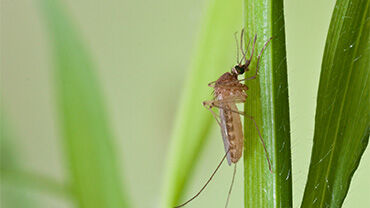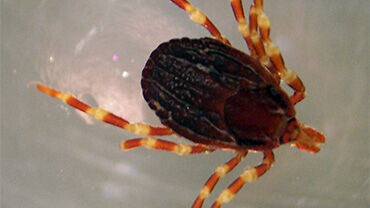Tick maps
The tick maps are published regularly to provide the ECDC stakeholders, the scientific community and the general public with updated information on tick distribution at ‘regional’ administrative unit level (NUTS3 or equivalent and NUTS2 in Austria, Belgium, Denmark, Germany, The Netherlands, England (UK), Scotland (UK) and Wales (UK)).
Please note that the maps do not represent the official view or position of the countries.
Surveillance for ticks
The surveillance maps shows the regions where surveillance activities for ticks were held in Europe and neighbouring regions.
Distribution maps of ticks
The map shows the current known distribution of the tick species in Europe at ‘regional’ administrative level (NUTS3). They are based on published historical data and confirmed data provided by experts from the respective countries as part of the VectorNet project.
Separate maps for the distribution of each of the following tick species are currently available: Dermacentor reticulatus, Hyalomma marginatum, Ixodes persulcatus, Ixodes ricinus, Rhipicephalus bursa, Rhipicephalus sanguineus, Ornithodoros spp.
For native species the possible distribution statuses are:
- Present: The species has been observed to be present in at least one municipality within the administrative unit.
- Introduced: The species has been introduced in the administrative unit without confirmed establishment.
- Anticipated Absent: the species has never been reported and there is a high probability that it is absent.
- Confirmed Absent: the species has never been reported within the administrative unit and there have been field surveys or studies on ticks within the last 5 years of the distribution status date.
- No Data: No sampling has been performed and no data on the species is available.
- Unknown: The status is unknown
Areas outside the scope of the VectorNet geographical scope are colour-coded as ‘Outside scope’.
Vector distribution status changes in terms of spatial units since the previous update
Since the previous update (March 2022), updates for the six species are as follows:
- Dermacentor reticulatus: data captured for 99 NUTS3s, and changes suggested for 35 NUTS3s – including new areas of presence in Belgium, Croatia, Czech Republic, Germany, Netherlands, Poland, Russia and Spain
- Hyalomma lusitanicum: data captured for 10 NUTS3s, and changes suggested for 7 NUTS3s – including new areas of presence in Spain (including northern regions)
- Hyalomma marginatum: data captured for 45 NUTS3s, and changes suggested for 3 NUTS3s – including new areas of presence and introduced records in France
- Ixodes persulcatus: data captured for 2 NUTS3s, with no changes suggested for the NUTS3 level
- Ixodes ricinus: data captured for 163 NUTS3s, and changes suggested for 19 NUTS3s – including new areas of presence in Azerbaijan, Bosnia & Herzegovina, Croatia, Georgia, Germany, Netherlands, Russia and Serbia
- Ornithodoros erraticus: no data captured for this species during Period 6
- Rhipicephalus sanguineus: data captured for 46 NUTS3s, and changes suggested for 13 NUTS3s – including new areas of presence in Croatia, Egypt, Israel, Russia and Spain, and an introduced record in the Netherlands






